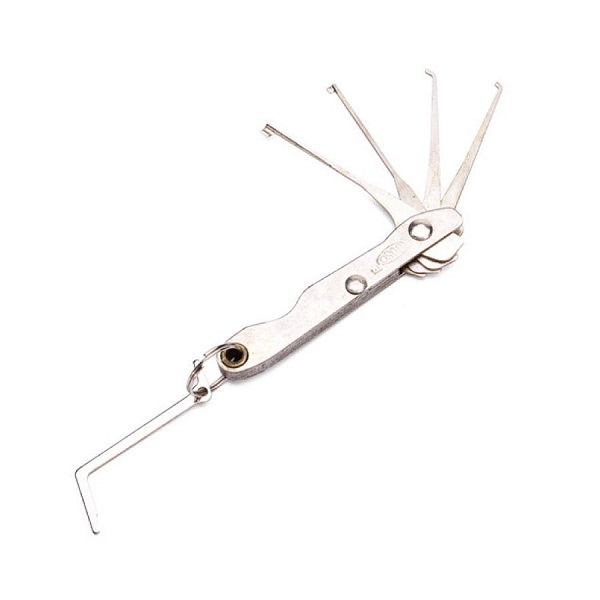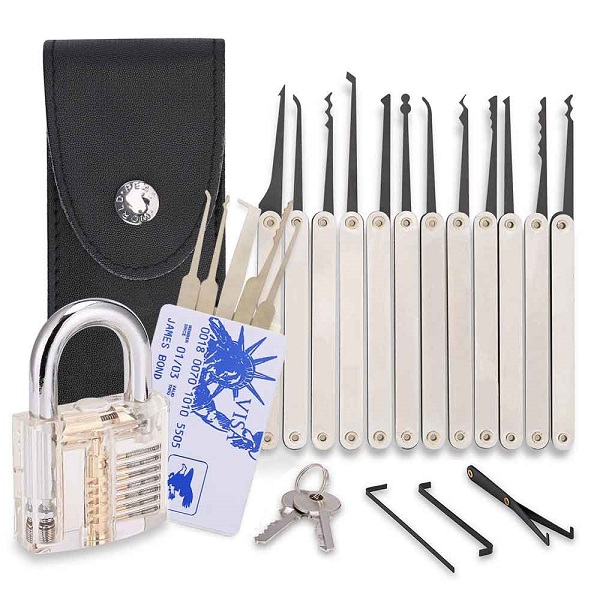Beginner Lock Pick Set Guide: Everything You Need to Know about Picks, Tension Wrenches and Practice Locks
2025-10-10 10:15
Starting your journey into lock picking can be exciting, and having the right equipment is the first crucial step. Selecting a proper starter kit is essential for building a solid foundation. For those new to the hobby, it is highly recommended that you Buy Beginner Lock Pick Set to ensure you receive a comprehensive collection of high quality tools designed specifically for learning. This initial investment will provide all the necessary implements to begin practicing safely and effectively.
What are the Essential Tools in a Beginner Lock Pick Set?
A well curated beginner set contains a selection of tools that allow you to tackle a variety of basic locks. Understanding the purpose of each tool will significantly accelerate your learning curve.
1.Hook Picks for Single Pin Picking
The hook pick is the most fundamental and versatile pick in any kit. Its simple curved tip is designed to manipulate individual key pins one at a time within the lock cylinder. This method, known as single pin picking, teaches you the precise feel and feedback of the lock's internal mechanism. Mastering the hook pick is critical as it builds the foundational skills and tactile sensitivity required for more advanced techniques. A good beginner set will include hooks of varying depths to handle different pin configurations.

2.Rake Picks for Speed and Efficiency
Rake picks have a wavy or serrated edge and are used for a faster, though less precise, technique called raking. This method involves rapidly scrubbing the pick across the pins to bounce them into place, often relying on vibration and momentum to set the shear line. Rakes like the city rake, snake rake, and bogota are excellent for beginners to quickly achieve opens, building confidence early on. They are particularly useful for understanding basic lock mechanics before moving on to the more meticulous single pin picking.
3.A Variety of Tension Wrenches
Often considered the most important tool, the tension wrench applies rotational pressure to the lock's plug, similar to a key turning. Beginner sets should include wrenches in different widths and profiles, such as twisted, double-ended, and L-shaped. Top of the keyway (TOK) and bottom of the keyway (BOK) wrenches offer different leverage points and are essential for learning how varying tension affects the picking process. Using the correct tension wrench for the specific lock is a skill in itself and is vital for success.
How Do You Use Picks and Tension Wrenches Effectively?
Effective lock picking is a delicate dance between the pick and the tension wrench. Proper technique with both tools is what separates a successful open from a frustrating jam.
1.Applying the Correct Tension Pressure
The golden rule of lock picking is that tension is everything. Applying too much pressure will over-set the pins and bind the lock cylinder, while too little will allow the pins to fall back down. The key is to use the lightest touch possible, often described as barely enough pressure to hold a piece of paper against a wall. This light tension allows you to feel the subtle clicks as each pin sets at the shear line. Learning to modulate your tension based on the feedback from the lock is the core skill you must develop.
2.Manipulating Pins with Precision
When using a hook pick, the goal is to systematically lift each pin stack until you feel the driver pin catch at the shear line. Gently probe each pin to find which one is binding the most, a result of the tension you are applying. Lift that pin slowly until you hear or feel a faint click, then move to the next binding pin. This process requires patience and a steady hand. The pick should be held like a pencil, using your fingers for fine motor control rather than your whole arm.

What Practice Locks Should You Use to Hone Your Skills?
Practice locks are engineered to provide a structured learning path, offering clear feedback and progressively increasing difficulty. They are indispensable for building muscle memory and confidence.
1.Clear or Cutaway Locks for Visual Feedback
For absolute beginners, a clear acrylic or cutaway metal lock is invaluable. These locks allow you to see the internal pins, springs, and plug in real time as you manipulate them with your tools. This visual confirmation helps you understand the cause and effect of your actions, linking the physical sensations in your hands to what is actually happening inside the lock. It demystifies the process and provides immediate, clear feedback on your technique.
2.Progressive Lock Sets for Gradual Learning
A progressive lock set typically includes several identical locks that have been pinned with an increasing number of pins, for example, a 2-pin, 3-pin, 4-pin, and 5-pin lock. This allows you to start with the simplest mechanism and gradually add complexity as your skills improve. Mastering the 2-pin lock builds confidence, and each subsequent lock introduces a new level of challenge, reinforcing your skills in a structured and manageable way. This is one of the most effective methods for building genuine competency.
Mastering lock picking requires dedication, the right tools, and consistent practice. By starting with a quality set, understanding the role of each tool, and using structured practice locks, you will build a strong and effective skill set. The initial learning curve is best navigated with reliable equipment, and you do not need to spend a fortune to begin. For those seeking an accessible entry point, you can find a Cheap Beginner Lock Pick Set that still offers the essential tools and quality to start your journey on the right foot. The most important step is to begin practicing with purpose and patience.

 Like Us on Facebook to enjoy 5% discount
Like Us on Facebook to enjoy 5% discount